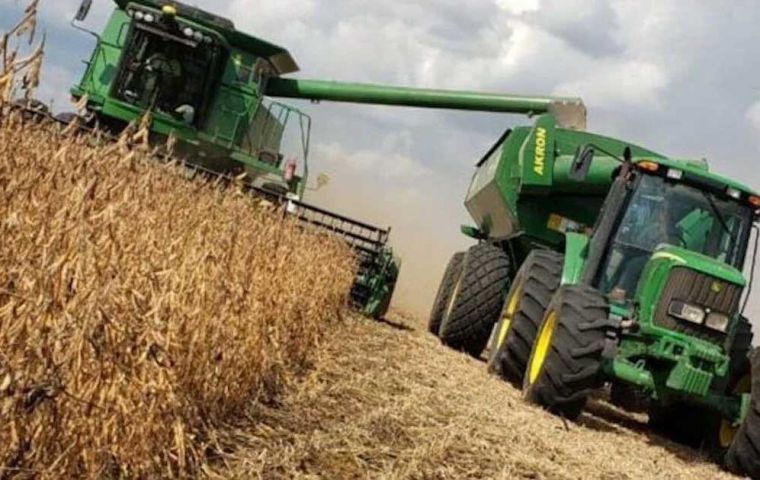MercoPress. South Atlantic News Agency
La Niña threatens this year's soybean crop in Paraguay
 Some rain has fallen but still below average so the deficit remains
Some rain has fallen but still below average so the deficit remains Paraguayan soybean producers warned this weekend that the La Niña weather phenomenon may affect this year's crop while the 2023/24 harvest is expected to reach a record in tons produced and exported, it was reported in Asunción.
The 2024/25 agricultural cycle could be affected by La Niña with rainfall deficits before the end of the year. According to the Paraguayan Chamber of Exporters and Marketers of Cereals and Oilseeds (Cámara Paraguaya de Exportadores y Comercializadores de Cereales y Oleaginosas - Capeco) 7.7 million tons of soybeans were exported until last month, an all-time high in terms of volumes shipped, with results even surpassing the previous record of 6.5 million tons during the 2019/20 campaign.
According to Capeco's Foreign Trade Advisor Sonia Tomassone current projections for the 2023/24 campaign exceed 10.7 million tons, although the exact figures are not to be announced until next month.
Tomassone pointed out that, despite a decrease in international prices of agricultural commodities, exports until October yielded revenues worth US$ 3.073 billion, or US$ 38.9 million than in the same period of 2023. Argentina continues to account for 83% of soybean shipments, followed by Brazil (10%) and Russia (4%). Other buyers were Peru, Spain, the United States, Uruguay, Japan, Chile, South Korea, Kuwait, Guatemala, and Indonesia.
“It should be noted that during October, for the first time, exports to Kuwait were recorded, which opens as a new market, so that to date there are 52 authorized markets for Paraguayan soybeans,” said Tomassone.
Capeco insisted that given La Niña's threat, the 2024/25 agricultural campaign will require careful management and timely decisions in a challenging context due to moisture and rainfall deficits.
Forecasts from the Meteorology and Hydrology Directorate are not encouraging either: ”Although we are currently still going through the neutral phase, indicators point out that La Niña should set in now, before the end of the year and extend, at least, during the first five months of 2025,″ Director Eduardo Mingo explained. He also Mingo recalled that current rainfalls are still below average, so the deficit remains.
In late October, Meteorologist Max Pastén Castillo said that La Niña could cause the Paraguay River crisis to drag on into early 2025. This problem has caused a 30% increase in logistics as fewer barges sail through, each of them carrying cargoes below their full capacity, resulting in foreign trade losses of around US$ 300, according to the River and Maritime Shipowners Center (Centro de Armadores Fluviales y Marítimos - Cafym).




Top Comments
Disclaimer & comment rulesCommenting for this story is now closed.
If you have a Facebook account, become a fan and comment on our Facebook Page!